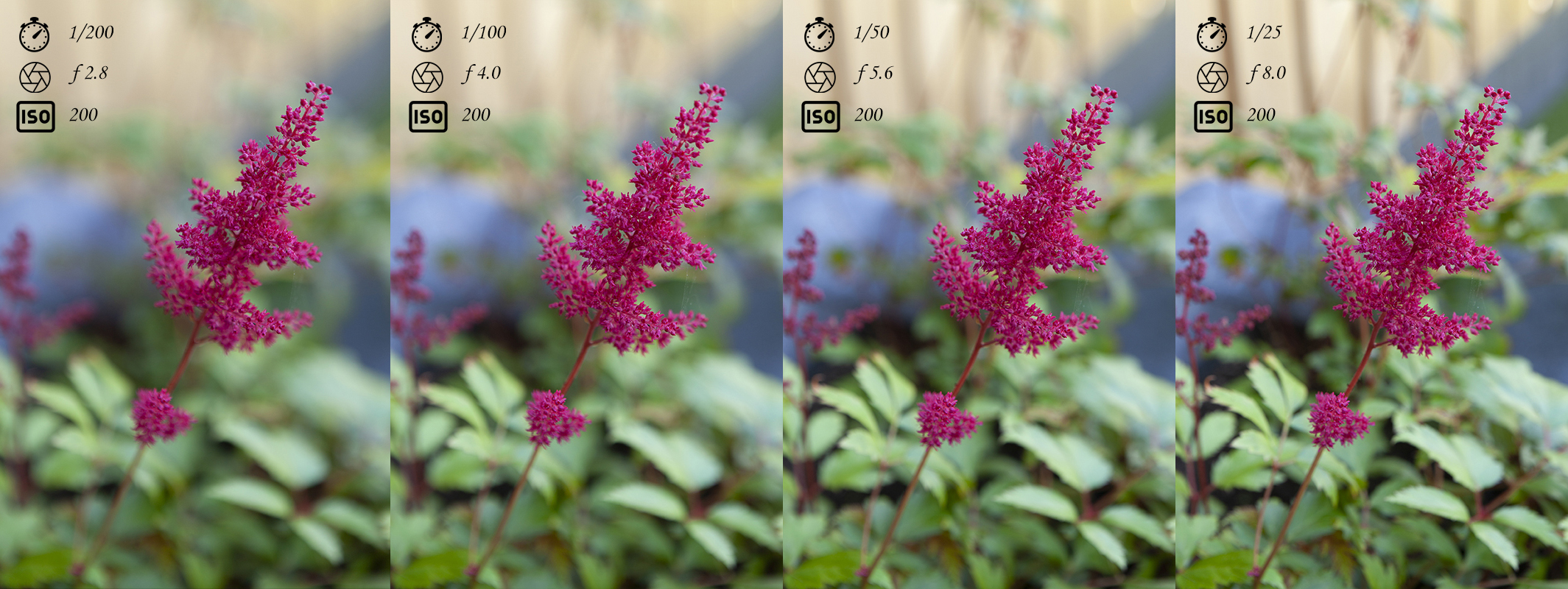Cameras are built to make good photos in auto-mode. Almost every time, your camera will deliver a sharp, well illuminated photo.
But is it the best way to produce good photos? If you have some basic knowledge about cameras, deviating from auto-mode has huge upsides for getting better photos. Besides, it is also much more fun, right?
Your camera has many settings that you can change, but the basics of photography are dependent on just a few settings, for example:
- Aperture, which determines the opening of your lens.
- Shutter speed, which makes how long your sensor is being illuminated when you make a photo.
- ISO-value, which makes your sensor more or less sensitive to light.
Today, i will explain how the aperture works and how you can adjust it yourself, to get better photos.
Aperture
The aperture, also called the f-stop, is the opening of your lens where light shines through on your sensor. You can adjust this aperture in size, which effects:
- The amount of light that reaches your sensor.
- The sharpness of your photo.
- The Depth of Field of your photo.
The aperture setting can be confusing. The smaller the f-number, the larger the opening of your lens. This means that the setting f2.8 is a larger opening than f4. f4 is a larger lens opening than f5.6 etc.
Because the aperture determines how much light reaches your sensor, it also has a direct relationship with 2 other basic camera settings: Shutter Speed and ISO-value. These 3 settings work together to get a properly illuminated photo.
The Aperture is expressed in 'Stops'. I am curiosu to see if you can see the relationship between the apertures below and their Shutter Speeds.
- f2.8 with a Shutter Speed of 1/400
- f4.0 with a Shutter Speed of 1/200
- f5.6 with a Shutter Speed of 1/100
The change from f2.8 to f4 is what they call a stop of light. When 'stopping down' a single stop (increasing the f-value) your shutter speed will double. Increasing it another stop, and the shutter speed will double again.
The full stops expressed in f-values are: f1.0, f1.4, f2.0, f2.8, f4.0, f5.6, f8, f11, f16, f22. Most of the times, it is also possible to change the aperture settings in partial stops.
A lens that can open up to a lower f-number (f2.8 or lower) means that more light will be able to reach the sensor and thereby also needing to have faster shutter speeds. This is why this is called a 'fast lens'. Most of the time, these are also more expensive.
A lens that can open up to a lower f-value will also perform better in low-light situations, such as dusk or dawn.
Sharpness & Depth of Field
The amount of light that reaches your sensor is not the only variable where aperture has an influence. It also effects the sharpness of your photo. Most lenses are not at their sharpest when their aperture is fully opened. 'Stopping down' 1 or 2 stops will in most cases get you a sharper result.
Besides, aperture also as an effect on the Depth of Field (DOF) of your photo. When you focus (for example on the eyes of your model), the image is not just sharp on the eyes but is has a 'range' of sharpness. This is called the Depth of Field. When your aperture is at f2.8 you will have less DOF than at f8 for example.

In these photos, you clearly see that when the f-value increases, the sharpness and DOF of the photo increases.
Why is this important? Because less DOF attracts the eye of the one viewing the photo to the parts of the photo that is in-focus. Because of this, a lower f-value is typically used for portrait photography, flowers and still-life, animals and sports photography. In contrast, a higher f-value is typically used for landscape photography, because in most cases you want the entire landscape to be in-focus.
In the 4 photos you also see the relationship between Aperture, Shutter Speed and ISO-value. The photos are illuminated the same, but because of the changing Aperture the Shutter Speed needed to be adjusted to get the same exposure. One stop increase in f-value should double your Shutter Speed, if ISO-value remains the same.
I have a task for you.
Your camera has a settings wheel on top of it, where different modes can be found. There is a mode called the 'A' or 'AV' mode (Aperture-priority). This is the setting where you are in control of the cameras Aperture. When you take photos in this mode, you adjust only the aperture, and your camera chooses Shutter Speed and ISO-value accordingly. The task i have:
Go out and start photographing in the Aperture-Priority mode. Use what you have learned in this article to make a photo of a model, a flower or a landscape and see what changing the aperture does to your photos!
In the next article, we will be discussing the Shutter Speed.
